Video Best Sellers
89 products
-
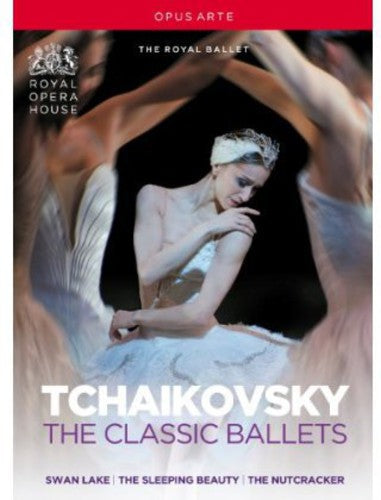 {# optional: put hover video/second image here positioned absolute; inset:0 #}
Opus Arte
{# optional: put hover video/second image here positioned absolute; inset:0 #}
Opus ArteTchaikovsky: The Classic Ballets / Royal Ballet
Pyotr Il’yich Tchaikovsky CLASSIC BALLETS (3-DVD Box Set) Swan Lake Odette / Odille – Marianela Nuñez Prince Siegfried – Thiago Soares The...
$39.99September 24, 2013 -
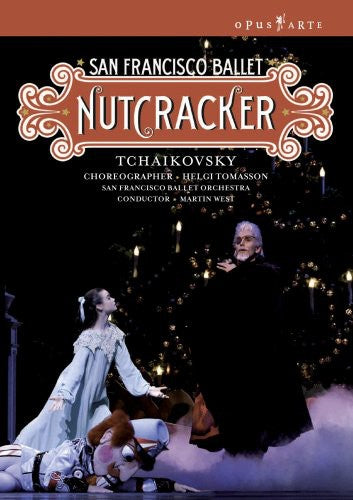
-
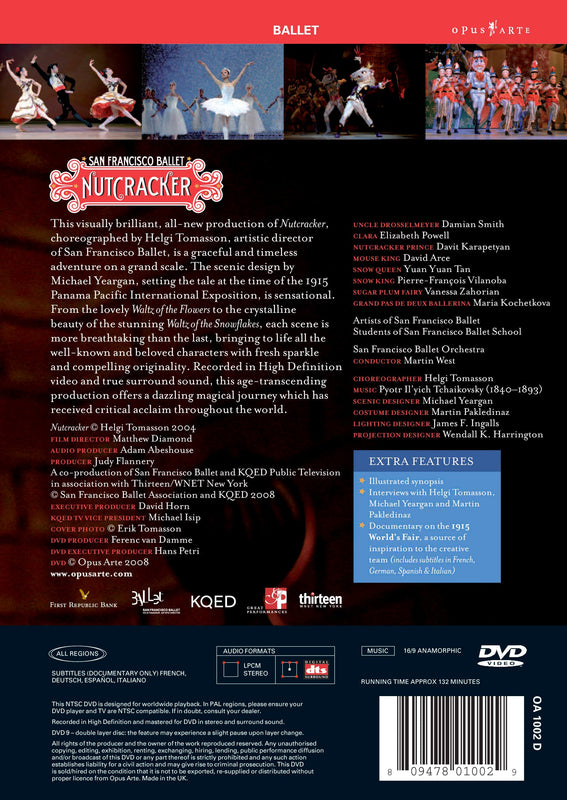
-
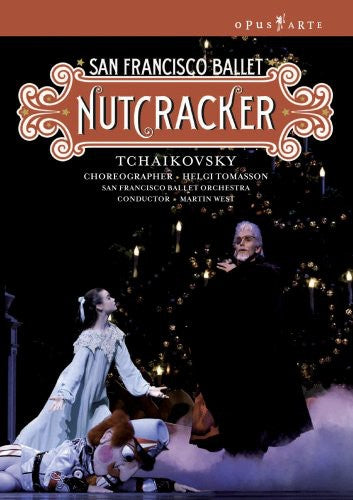 {# optional: put hover video/second image here positioned absolute; inset:0 #}
Opus Arte
{# optional: put hover video/second image here positioned absolute; inset:0 #}
Opus ArteTchaikovsky: The Nutcracker / San Francisco Ballet
Also available on Blu-ray 3253870.zz80_TCHAIKOVSKY_Nutcracker_Martin.html TCHAIKOVSKY Nutcracker & • Martin West, cond; Damian Smith ( Drosselmeyer ); Elizabeth Powell ( Clara );...
$34.99November 18, 2008 -
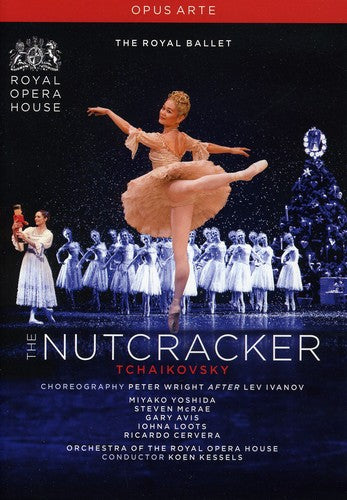
-
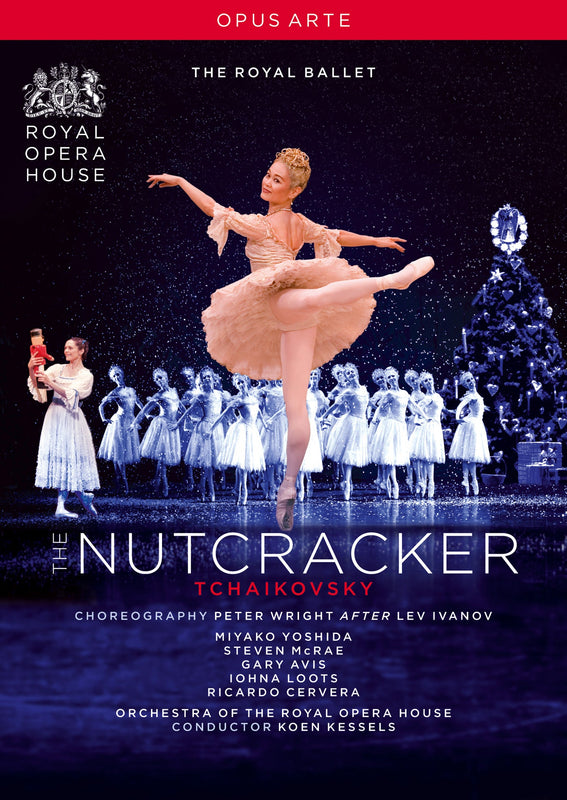
-
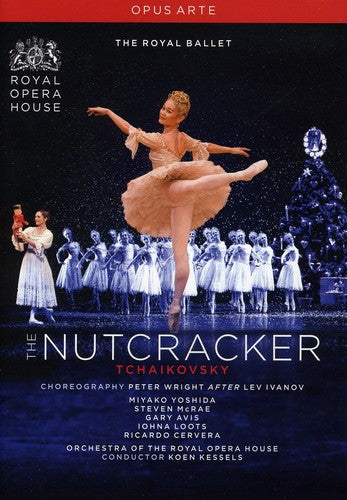 {# optional: put hover video/second image here positioned absolute; inset:0 #}
Opus Arte
{# optional: put hover video/second image here positioned absolute; inset:0 #}
Opus ArteTchaikovsky: The Nutcracker / Royal Ballet
Also available on Blu-ray Pyotr Il'yich Tchaikovsky THE NUTCRACKER "One of the very best seasonal treats for children and adults alike, the...
$34.99October 26, 2010 -
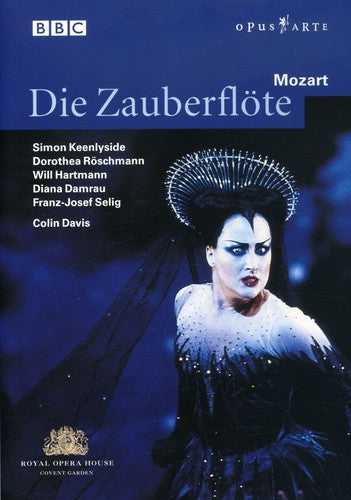 {# optional: put hover video/second image here positioned absolute; inset:0 #}
On SaleOpus Arte
{# optional: put hover video/second image here positioned absolute; inset:0 #}
On SaleOpus ArteMozart: Die Zauberflöte / Davis, Keenlyside, Damrau
Covent Garden’s 2003 production of The Magic Flute is magnificent from a musical standpoint and more than that, it’s vastly entertaining. Visually,...
September 01, 2003$34.99$26.99 -
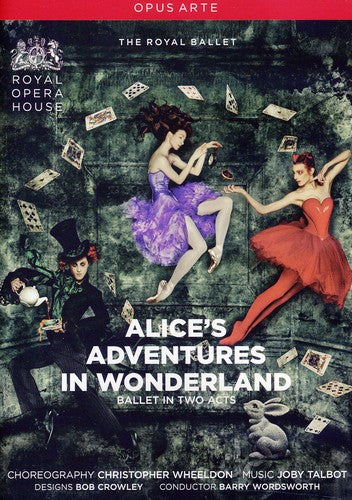
-
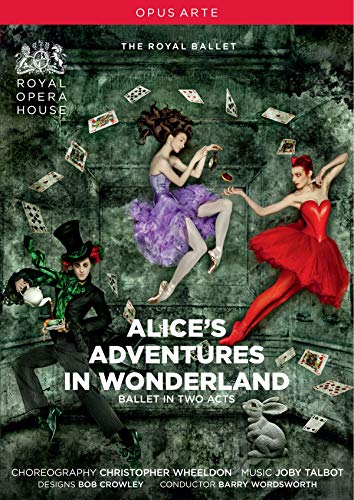
-
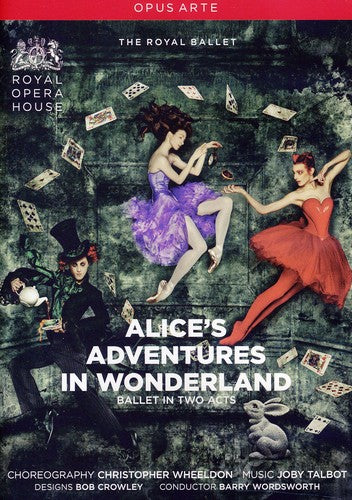 {# optional: put hover video/second image here positioned absolute; inset:0 #}
Opus Arte
{# optional: put hover video/second image here positioned absolute; inset:0 #}
Opus ArteAlice's Adventures In Wonderland - Royal Ballet / Talbot, Wheeldon
Also available on Blu-ray Joby Talbot ALICE’S ADVENTURES IN WONDERLAND Ballet in 2 Acts Alice – Lauren Cuthbertson Jack / Knave of...
$34.99October 25, 2011 -
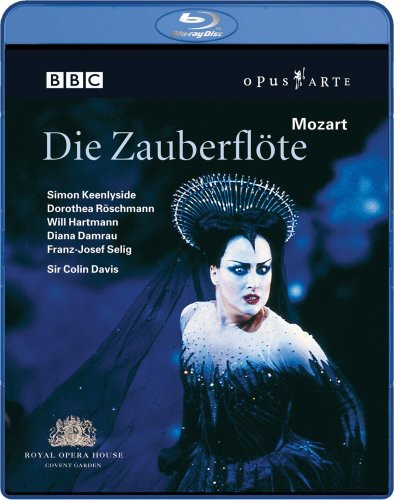
-
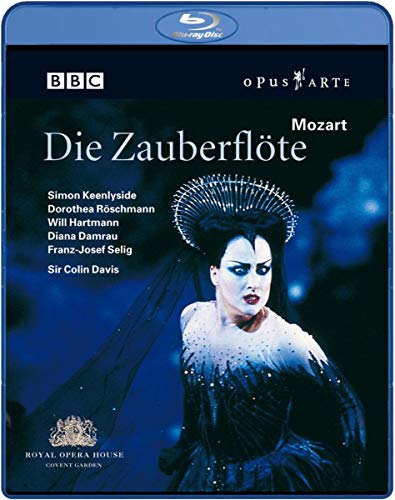
-
![Mozart: Die Zauberflöte / Davis, Keenlyside, Damrau [Blu-ray]](//arkivmusic.com/cdn/shop/files/1334200.jpg?v=1749392519&width=800) {# optional: put hover video/second image here positioned absolute; inset:0 #}
On SaleOpus Arte
{# optional: put hover video/second image here positioned absolute; inset:0 #}
On SaleOpus ArteMozart: Die Zauberflöte / Davis, Keenlyside, Damrau [Blu-ray]
*** This Blu-ray Disc is only playable on Blu-ray Disc players and not compatible with standard DVD or HD DVD players. ***
April 29, 2008$39.99$29.99 -
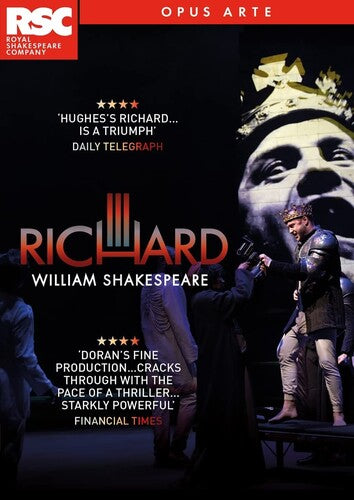
-
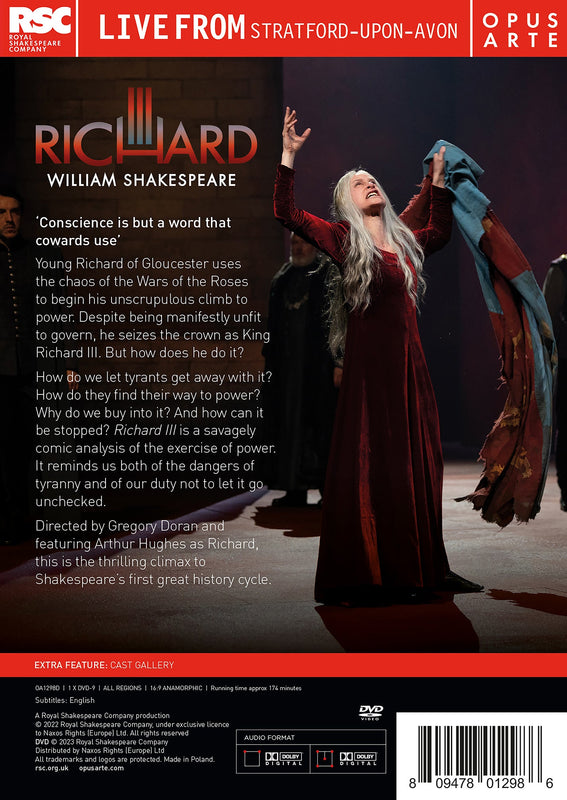
-
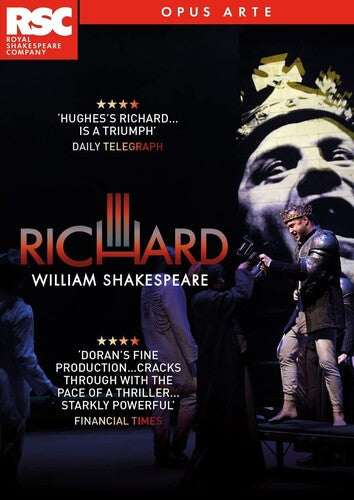 {# optional: put hover video/second image here positioned absolute; inset:0 #}
Opus Arte
{# optional: put hover video/second image here positioned absolute; inset:0 #}
Opus ArteShakespeare: Richard III / Royal Shakespeare Company
‘Conscience is but a word that cowards use’ – Young Richard of Gloucester uses the chaos of the Wars of the Roses...
$29.99April 28, 2023 -
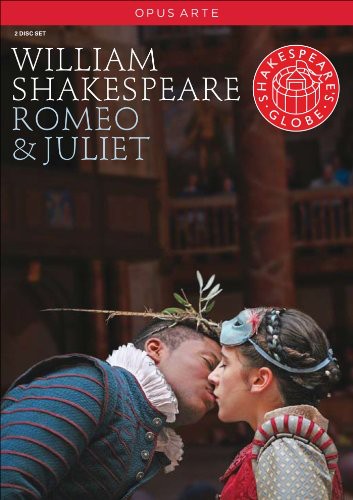 {# optional: put hover video/second image here positioned absolute; inset:0 #}
Opus Arte
{# optional: put hover video/second image here positioned absolute; inset:0 #}
Opus ArteRomeo And Juliet / Edun, Kendrick
William Shakespeare ROMEO AND JULIET (Standard DVD in NTSC Version) Prince Escalus – Andrew Vincent Mercutio – Philip Cumbus Paris – Tom...
$39.99May 25, 2010 -
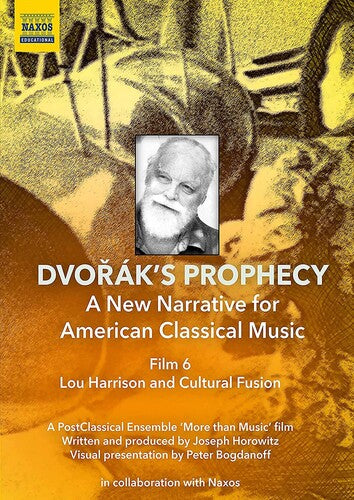
-
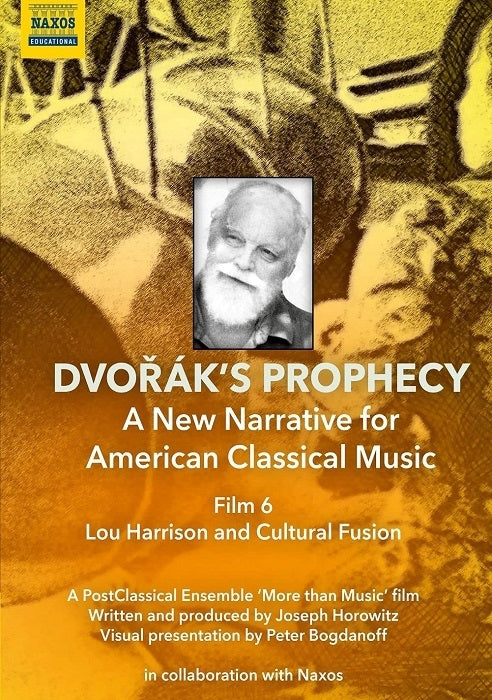
-
![Dvorak's Prophecy - Film 6 - Lou Harrison & Cultural Fusion [DVD]](//arkivmusic.com/cdn/shop/files/4009930-2753040.jpg?v=1749278802&width=800) {# optional: put hover video/second image here positioned absolute; inset:0 #}
On SaleNaxos
{# optional: put hover video/second image here positioned absolute; inset:0 #}
On SaleNaxosDvorak's Prophecy - Film 6 - Lou Harrison & Cultural Fusion [DVD]
“Lou Harrison and Cultural Fusion”A PostClassical Ensemble “More than Music” filmWritten and produced by Joseph HorowitzVisual presentation by Peter BogdanoffFilm six in...
November 12, 2021$12.99$6.49 -
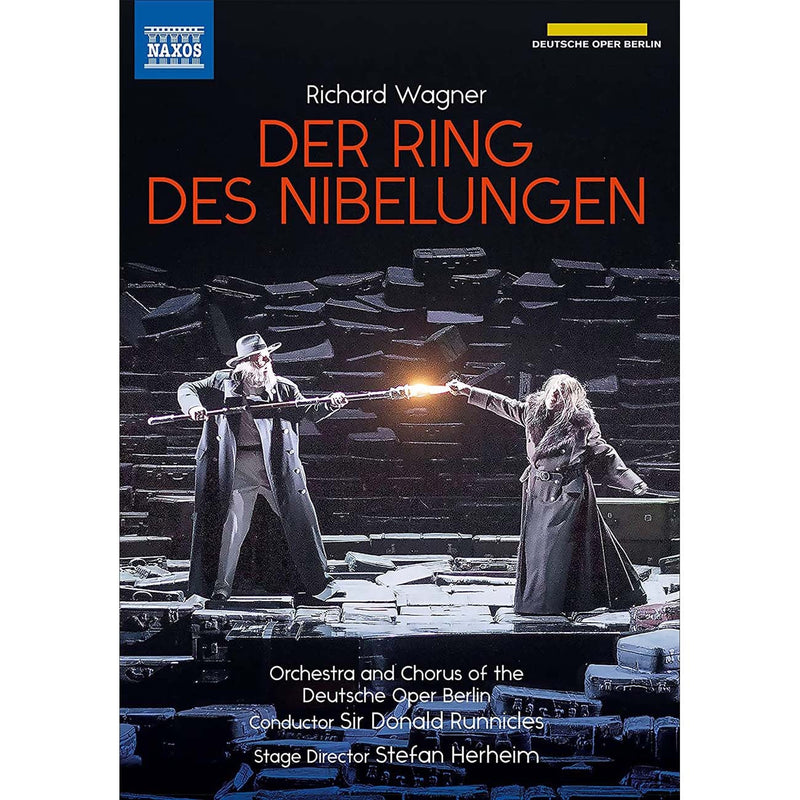
-
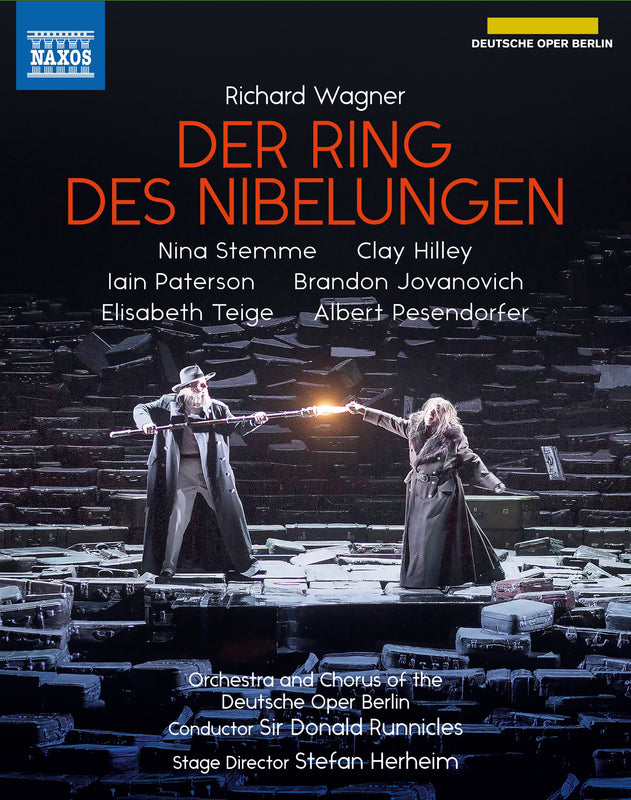
-
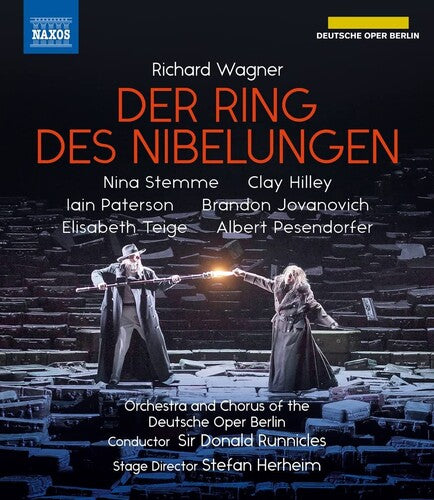
-
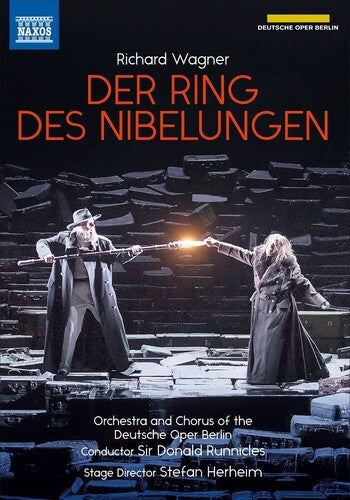
-
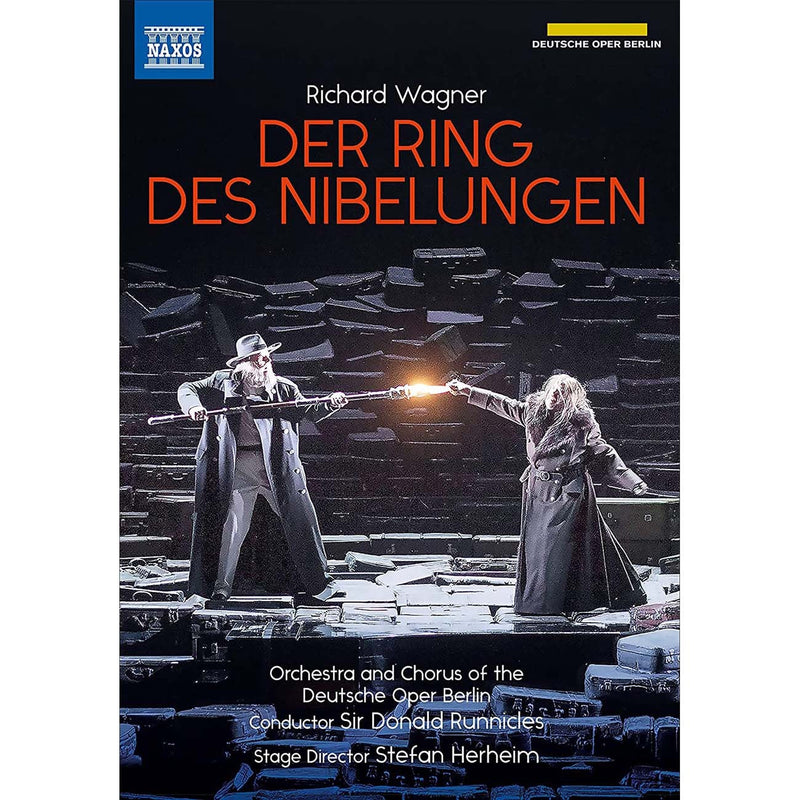 {# optional: put hover video/second image here positioned absolute; inset:0 #}
On SaleNaxos AudioVisual
{# optional: put hover video/second image here positioned absolute; inset:0 #}
On SaleNaxos AudioVisualWagner: Der Ring des Nibelungen / Stemme, Hilley, Runnicles, Deutsche Oper Berlin
The tetralogy of four operas that form Der Ring des Nibelungen (‘The Ring of the Nibelung’) explores the conjunction of love and...
November 11, 2022$129.99$97.99 -
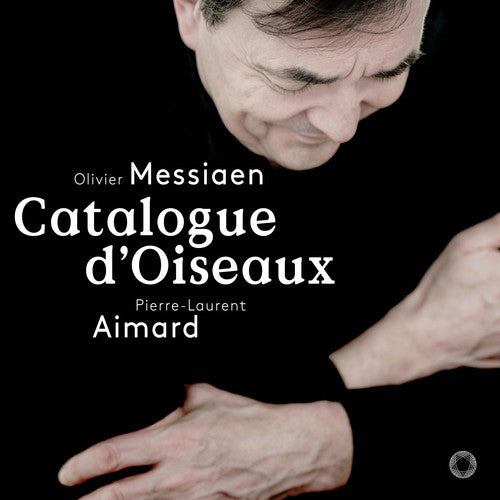
-
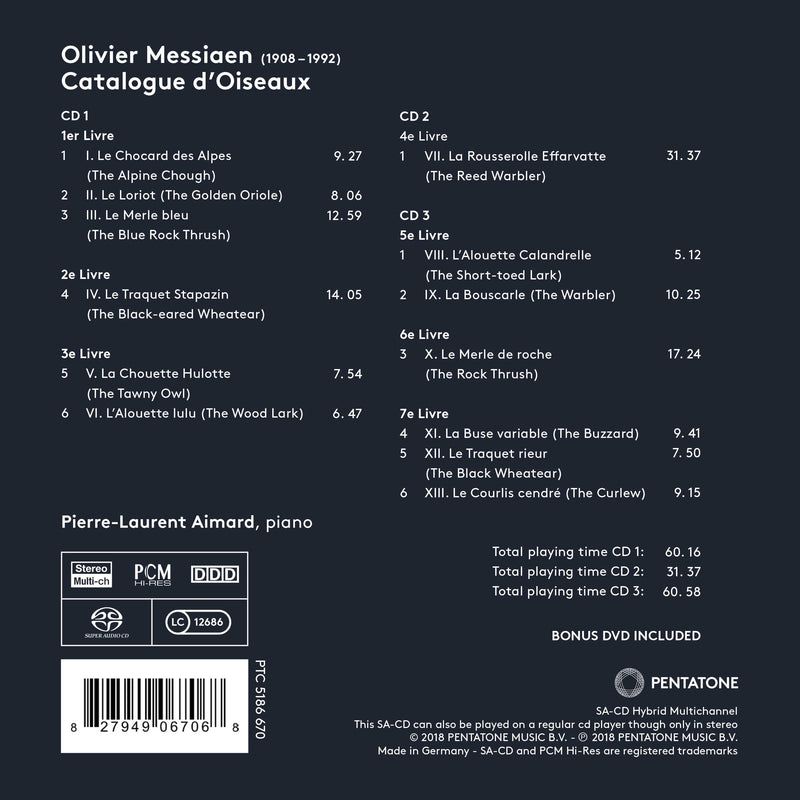
-
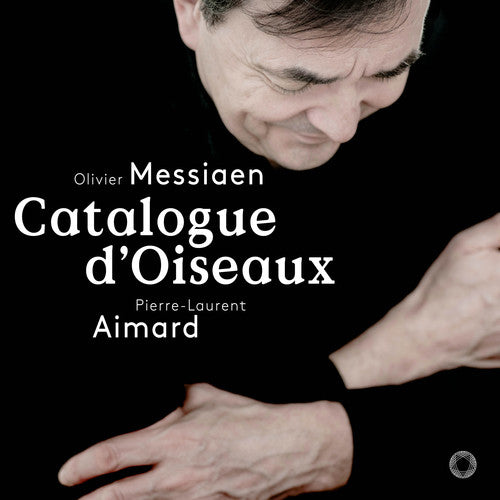 {# optional: put hover video/second image here positioned absolute; inset:0 #}
PENTATONE
{# optional: put hover video/second image here positioned absolute; inset:0 #}
PENTATONEMessiaen: Catalogue d'Oiseaux / Pierre-Laurent Aimard
Renowned French pianist Pierre-Laurent Aimard kicks off his exclusive engagement to PENTATONE with a recording of Olivier Messiaen’s Catalogue d’Oiseaux (1956-1958). The...
$53.99March 30, 2018 -
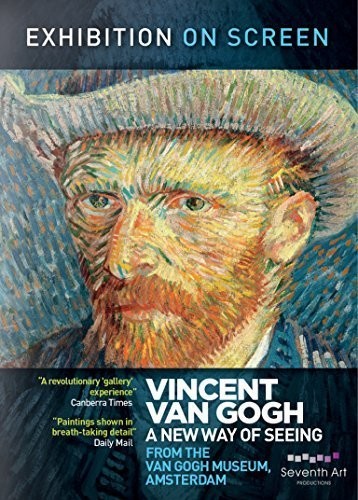 {# optional: put hover video/second image here positioned absolute; inset:0 #}
Seventh Art Productions
{# optional: put hover video/second image here positioned absolute; inset:0 #}
Seventh Art ProductionsEXHIBITION ON SCREEN: VAN GOG
Given complete and unprecedented access to the treasures of Amsterdam's Van Gogh Museum, Vincent van Gogh: A New Way of Seeing is...
$23.99July 31, 2015 -
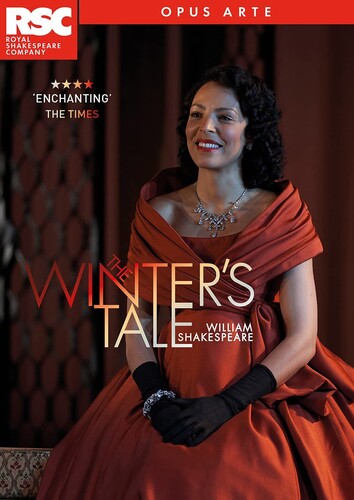
-
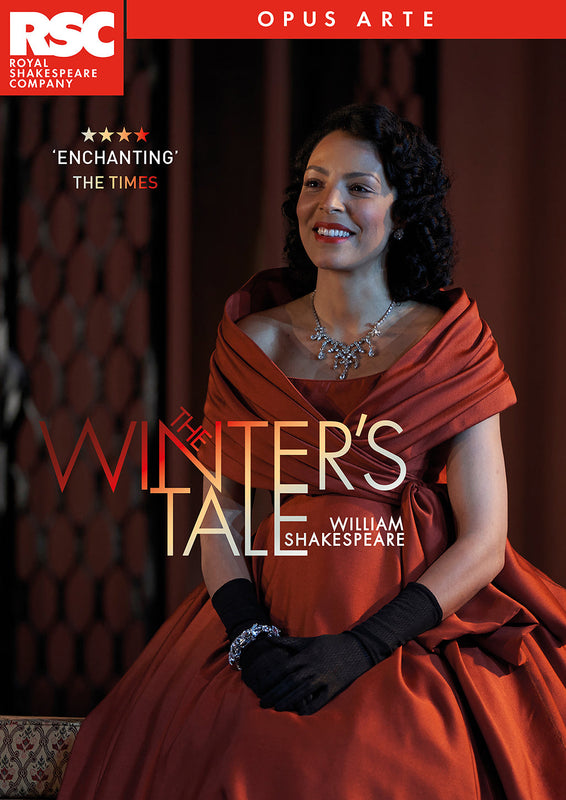
-
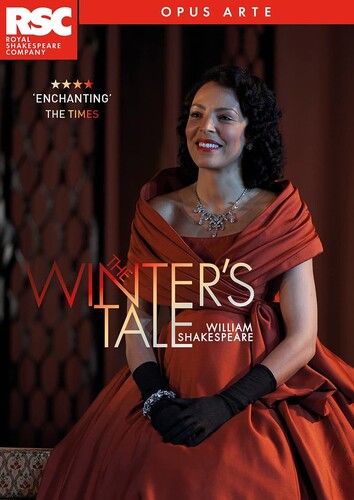 {# optional: put hover video/second image here positioned absolute; inset:0 #}
Opus Arte
{# optional: put hover video/second image here positioned absolute; inset:0 #}
Opus ArteShakespeare: The Winter's Tale
On this new release from the Royal Shakespeare Company, Shakespeare’s classic tale is reimagined especially for the screen. King Leontes rips his...
$29.99June 24, 2022 -
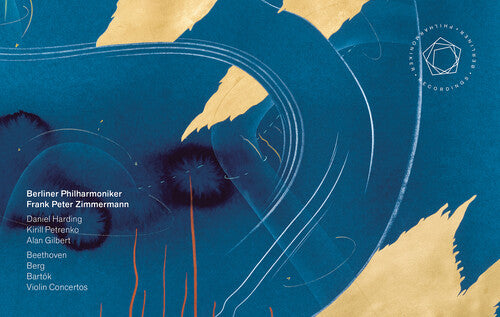
-
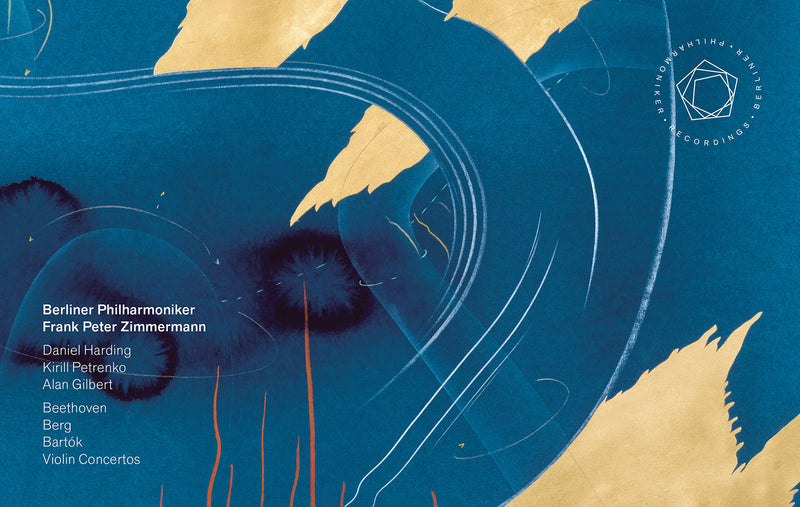
-
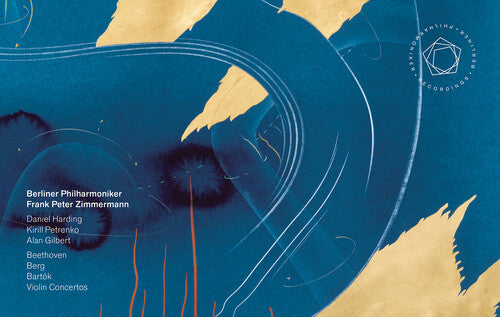 {# optional: put hover video/second image here positioned absolute; inset:0 #}
Berlin Philharmoniker
{# optional: put hover video/second image here positioned absolute; inset:0 #}
Berlin PhilharmonikerBeethoven, Berg, Bartók: Violin Concertos / Zimmermann, Berlin Philharmonic
The world’s great conductors are not the only important artistic companions of the Berliner Philharmoniker. It is also always exceptional soloists who...
$69.99October 15, 2021 -
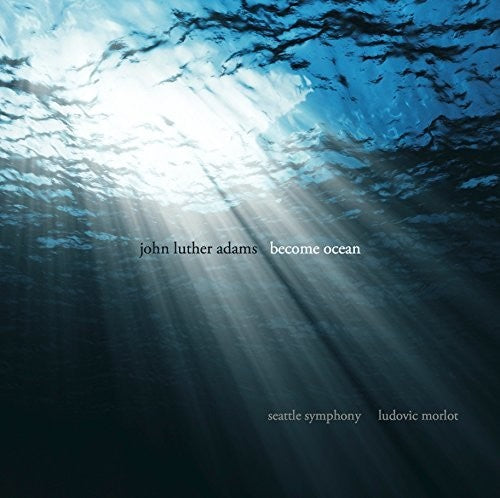
-
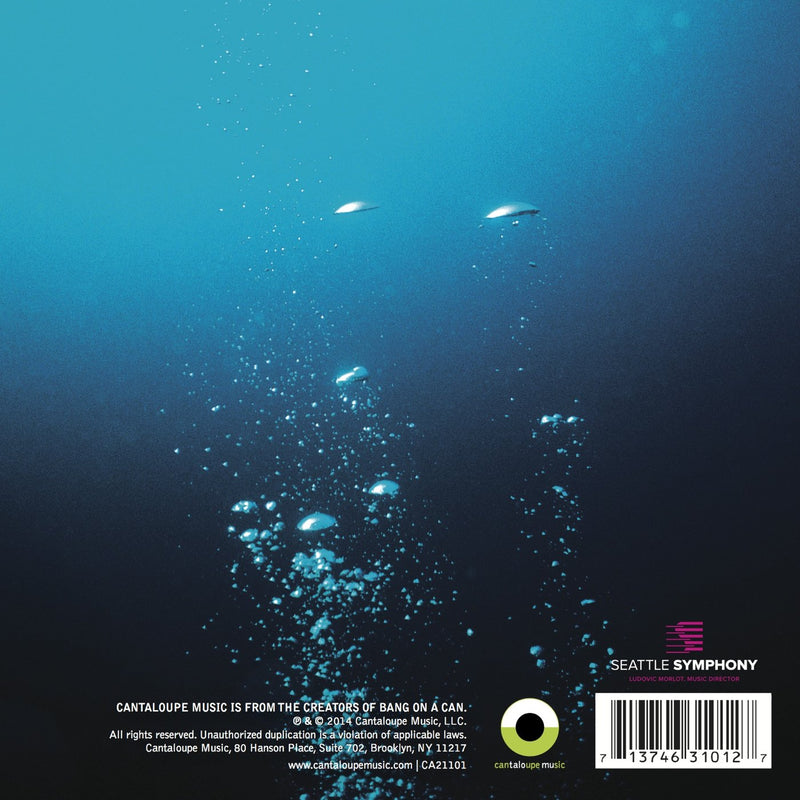
-
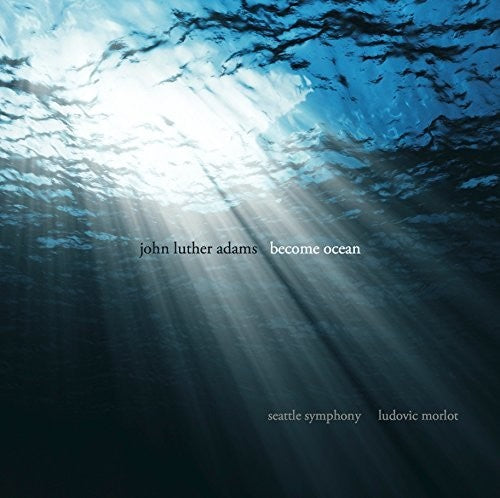 {# optional: put hover video/second image here positioned absolute; inset:0 #}
Cantaloupe Music
{# optional: put hover video/second image here positioned absolute; inset:0 #}
Cantaloupe MusicAdams: Become Ocean / Morlot, Seattle Symphony
Includes 1 CD & 1 DVD Awarded the 2014 Pulitzer Prize for Music, John Luther Adams’ Become Ocean was commissioned and premiered...
$21.99September 30, 2014
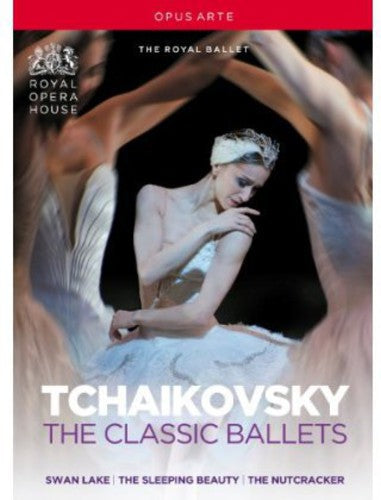
Tchaikovsky: The Classic Ballets / Royal Ballet
CLASSIC BALLETS
(3-DVD Box Set)
Swan Lake
Odette / Odille – Marianela Nuñez
Prince Siegfried – Thiago Soares
The Princess, Siegfried’s mother – Elizabeth McGorian
An Evil Spirit / Von Rothbart – Christopher Saunders
The Tutor – Alastair Marriott
Benno – David Pickering
Royal Ballet
Royal Opera House Orchestra
Valeriy Ovsyanikov, conductor
Anthony Dowell, stage director
Marius Petipa and Lev Ivanov, choreographers
Recorded at the Royal Opera House, Covent Garden, London, on 16 and 24 March 2009
Bonus:
- Illustrated synopsis
- Cast gallery
- Interview with Anthony Dowell
- Four Swan Queens - Exclusive 30-minute conversation on the demands of dancing the role of the Swan Queen with former Prima Ballerinas
- Dame Beryl Grey, Dame Monica Mason, Lesley Collier and current principal Marianela Nuñez
The Nutcracker
The Sugar Plum Fairy – Miyako Yoshida
Nephew / Nutcracker – Ricardo Cervera / Steven McRae
The Prince – Steven McRae
Drosselmeyer – Gary Avis
Royal Ballet
Royal Opera House Orchestra
Koen Kessels, conductor
Peter Wright, choreographer and director (after Lev Ivanov)
Recorded live at the Royal Opera House, Covent Garden, London, November and December 2009
Bonus:
- Cast gallery
- Rehearsing at White Lodge
- Peter Wright tells the story of The Nutcracker
The Sleeping Beauty
Princess Aurora – Alina Cojocaru
Prince Florimund – Federico Bonelli
King Florestan XXIV – Christopher Saunders
His Queen – Elizabeth McGorian
Cattalabutte – Alastair Marriott
Carabosse – Genesia Rosato
Lilac Fairy – Marianela Nuñez
Royal Ballet
Royal Opera House Orchestra
Valeriy Ovsyanikov, conductor
Marius Petipa, choreographer
Recorded live at the Royal Opera House, Covent Garden, London on 5 December 2006
Bonus:
- Cast gallery
- Illustrated synopsis
---
Picture format: NTSC 16:9
Sound format: LPCM 2.0 / DTS 5.1
Region code: 0 (worldwide)
Subtitles (bonus): French, German, Spanish (Nutcracker) + Italian (Swan Lake, Sleeping Beauty)
Running time: 7 hours 37 mins
No. of DVDs: 3
Tchaikovsky: The Nutcracker / San Francisco Ballet
 Also available on Blu-ray
Also available on Blu-rayTCHAIKOVSKY Nutcracker & • Martin West, cond; Damian Smith ( Drosselmeyer ); Elizabeth Powell ( Clara ); Davit Karapetyan ( Nutcracker ); David Arce ( Mouse King ); Yuan Yuan Tan ( Snow Queen ); Pierre-François Vilanoba ( Snow King ); Vanessa Zahorian ( Sugar Plum Fairy ); Maria Kochetkova ( Grand pas de deux ); San Francisco Ballet O • BBC/OPUS ARTE 1002 (DVD: 132: 00) Live: San Francisco 12/19–20/2007
& Illustrated synopsis, cast gallery, artists interviews, documentary on 1915 World’s Fair
This is a wonderful production of Nutcracker , although it must be noted that it is not strictly traditional. The time and location have been shifted to 1915 San Francisco. The second act, usually located in The Kingdom of Sweets (or Candy Land, or Land of the Sugar Plum Fairy) has been placed in a pavilion at the 1915 Panama Pacific International Exposition. The act I setting in a Victorian “painted lady” and Edwardian costumes are still remote enough from today that the production retains a period flavor.
The first act is fairly faithful to the traditional story line: Christmas party, magical happenings at midnight, battle between soldiers and mice, ending with the “Waltz of the Snowflakes.” Instead of immobilizing the Mouse King by throwing her shoe, Clara distracts him and he steps into a large mousetrap. Clara and the Nutcracker travel to the Land of Snow in a glittering sleigh pulled by four horses with ingenious heads reminiscent of costumes from Equus . There is a spectacular snowfall during the “Waltz of the Snowflakes.” Throughout the act are many ingenious and effective special effects.
The second act, relocated to a pavilion at the Fair (identified as The Pavilion of Dreams), has many clever touches. Fitting with an international exposition, representatives from various countries arrive. A genie emerges from a large Aladdin’s lamp in the “Arabian Dance”; the Russian dancers leap out of giant Fabergé eggs, and Mother Ginger is transformed into Madame du Cirque whose copious gown is a large, festive three-ring circus tent from which emerges a dancing bear. The young Clara steps into a mirrored chamber and emerges as an adult to dance the pas de deux and variations usually assigned to the Sugar Plum Fairy and her prince. This is a first-class production with brilliant dancing, imaginative special effects, colorful costumes, and attractive scenery. Like many other productions of Nutcracker , the choreographer grounds the story line in reality by letting us know that all the fantastic happenings are merely Clara’s dream. For me, at least, that spoils the magic; it’s much more fun to pretend all the amazing events that begin at midnight really do happen. Telling us it was “just a dream” is like coming on stage after a magician has finished his act and announcing, “It’s an illusion, folks. The lady wasn’t sawn in half.” Do we really want a pin stuck in our balloon?
This San Francisco Nutcracker is on a par with Royal Ballet (their newer video from 2000 with Anthony Dowell’s incomparable Drosselmeyer), the Balanchine (with unnecessary interpolations and narration), and The Hard Nut , a clever, updated Nutcracker by Mark Morris. There are a plethora of Nutcracker videos; I’ve seen about a dozen of them. All have good and weak points, many dependent on the viewer’s likes and dislikes, but I would recommend the Royal Ballet, Balanchine, The Hard Nut (noting that it is significantly untraditional), and this San Francisco for serious consideration as first choices. All of the Nutcracker s that I’ve seen on video are, for lack of a better term, over-filmed, including this San Francisco. The image relentlessly shifts between cameras every second or two, there are many close-ups highlighting details that often aren’t important, pans, and dissolves that temporarily blur both images. Choreographer Helgi Tomasson has provided plenty of movement; we don’t need artificial action created by excessive editing. I sincerely hope that any of you who watch this video aren’t as bothered by the film direction as I was; the San Francisco Nutcracker deserves to be seen.
The bonus features, except for the First Republic Bank ad, are very interesting. Helgi Tomasson (choreographer, artistic director), Michael Yeargan (scenic designer), and Martin Pakledinaz (costume designer) in three separate interviews discuss their roles in creating the production. A separate track is devoted to the 1915 Panama Pacific International Exhibition with many historic photos. I wish the Cast Gallery or the booklet had included biographies of the principal dancers.
The picture is 16/9 anamorphic (wide screen), the sound formats are LPCM stereo and digital surround. Subtitles for the documentaries are in French, German, Spanish, and Italian.
FANFARE: David L. Kirk
Uncle Drosselmeyer: Damian Smith
Clara: Elizabeth Powell
The Nutcracker Prince: Davit Karapetyan
King of the Mice: David Arce
Queen of Snow: Yuan Yuan Tan
King of Snow: Pierre-François Vilanoba
Sugar Plum Fairy: Vanessa Zahorian
REGIONS: All
PICTURE FORMAT: 16:9
SOUND: DTS SURROUND 5.0 / LPCM 2.0 STEREO
SUBTITLES: French, German, Spanish, Italian
Tchaikovsky: The Nutcracker / Royal Ballet
Pyotr Il'yich Tchaikovsky
THE NUTCRACKER
"One of the very best seasonal treats for children and adults alike, the Royal Ballet’s Nutcracker is a handsome, magical, thoroughly traditional rendering of ETA Hoffmann’s immortal if deeply strange story." -- Sunday Express
This all-time ballet favourite, in which young Clara is swept into a fantasy adventure when one of her Christmas presents comes to life, is at its most enchanting in Peter Wright’s glorious production – as fresh as ever in its 25th year. Tchaikovsky’s ravishing score, period designs by Julia Trevelyan Oman (including an ingenious magical Christmas tree), an exquisite Sugar Plum Fairy (Miyako Yoshida) and chivalrous Prince (Steven McRae), the mysterious Drosselmeyer (Gary Avis) and vibrant dancing by The Royal Ballet make for a captivating performance. Filmed in High Definition and recorded in true surround sound.
The Sugar Plum Fairy – Miyako Yoshida
Nephew / Nutcracker – Ricardo Cervera / Steven McRae
The Prince – Steven McRae
Drosselmeyer – Gary Avis
The Royal Ballet
The Orchestra of the Royal Opera House
Koen Kessels, conductor
Peter Wright, choreographer and director
(after Lev Ivanov)
Recorded live at the Royal Opera House, November and December 2009.
Bonus:
- Cast gallery
- Rehearsing at White Lodge
- Peter Wright tells the story of The Nutcracker
Picture format: NTSC 16:9 anamorphic
Sound format: LPCM Stereo 2.0 / DTS 5.0
Region code: 0 (worldwide)
Menu language: English
Subtitles: English, French, German, Spanish
Running time: 127 mins
No. of DVDs: 1
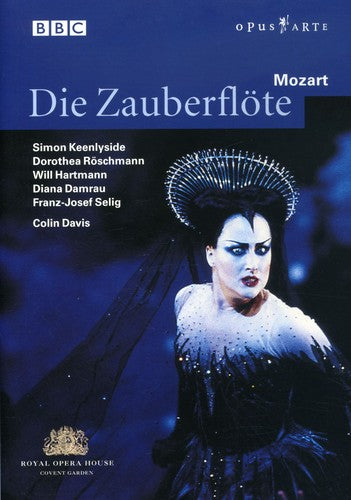
Mozart: Die Zauberflöte / Davis, Keenlyside, Damrau
"...a mellow warmth that was deeply satisfying. Simon Keenlyside triumph as quite the most engaging Papageno I have ever encountered, while the Tamino and Pamina of Will Hartman and Dorothea Roschmann were stylish and musically satisfying. With an exceptional Queen of the Night, Diana Damrou, this is an evening no Mozart lover should miss" David Mellor, The Mail on Sunday
"Sir Colin Davis presides at his most avuncular...he lives every moment of the score and conveys all its profound humanity." - GRAMOPHONE
Region Code 0
Picture format 16:9 Anamorphic
Running time approx 160 minutes DVD 9
Sound format Dolby stereo and 5.1 surround
Menu language English
SUBTITLE LANGUAGES: English/French/Spanish
The internationally renowned Mozart interpreter Sir Colin Davis conducts the chorus and orchestra of the Royal Opera House and a glittering cast in David McVicar's 2003 production of Mozart's last opera recorded, in sumptuous surround sound, live at Covent Garden.
EXTRA FEATURES
* BBC feature looks behind the scenes at this production
* Conductor Sir Colin Davis talks about Die Zauberflote
* Illustrated synopsis of the opera
* Illustrated booklet with biographies in English, French and Spanish
Alice's Adventures In Wonderland - Royal Ballet / Talbot, Wheeldon
Joby Talbot
ALICE’S ADVENTURES IN WONDERLAND
Ballet in 2 Acts
Alice – Lauren Cuthbertson
Jack / Knave of Hearts – Sergei Polunin
Lewis Carroll / White Rabbit – Edward Watson
Mother / Queen of Hearts – Zenaida Yanowsky
Father / King of Hearts – Christopher Saunders
Magician / Mad Hatter – Steven McRae
Duchess – Simon Russell Beale
Royal Ballet
Royal Opera House Orchestra
Barry Wordsworth, conductor
Christopher Wheeldon, choreography
Bob Crowley, designs
Nicholas Wright, scenario
Natasha Katz, lighting design
Recorded live from the Royal Opera House, Covent Garden, 9 March 2011.
Bonus:
- Cast Gallery
- Documentary – Being Alice
Picture format: NTSC 16:9 anamorphic
Sound format: LPCM 2.0 / DTS 5.1
Region code: 0 (worldwide)
Subtitles: English, French, German, Spanish
Running time: 120 mins (ballet) + 30 mins (bonus)
No. of DVDs: 1 (DVD 9)
R E V I E W:
A stimulating production.
It is a brave company that is prepared to take such a surrealist novel and turn it into a stage show. Where film can provide the visual trickery necessary to give visual magic, theatre machinery is cumbersome and pedantic in comparison. Yet the development of technical resources and video projection can help. With ballet, a large part of the stage must be kept free of obstructions to allow ballet routines to progress unimpeded.
To then faithfully transfer to a video medium without high level on-line visual trickery may not ideally help the viewer. So how then has Covent Garden fared in bringing about a stimulating production?
Very well, in fact. The prologue where Dodgson (Lewis Carroll) is taking photographs of the family group works excellently. It is set in a realistic deanery garden. Bob Crowley’s backdrop painting in faded Victorian hues is in keeping. In this opening scene we are introduced to the personalities that later appear as stereotypes in the fantasy world Alice uncovers. The only odd thing in a private deanery garden is having a nurse wheel a perambulator across the stage as if in a busy street.
Some of the settings contain more subtlety than might at first sight be noticed. Monotone backdrops, the Cheshire Cat and a paper boat are styled on the engravings found in Carroll’s first edition book. As the ballet progresses the settings become more flamboyant and graphically modern.
Particularly stunning is the Playing Cards scene. Choreography and costumes strike just the right note. A clever routine with a segmented Cheshire Cat allows believable animation.
As one might expect, the dancing is up to the exacting standards of the corps with a Covent Garden reputation. The problem of having Alice change size was well contrived and Lauren Cuthbertson’s acting is excellent. The character of the White Rabbit is extremely officious throughout I noticed, yet pales before the bombastic pomp of the Queen of Hearts (Zenaida Yanowsky).
The orchestra plays well under the secure direction of Barry Wordsworth, a conductor not seen enough of nowadays. Talbot’s music has facets of talent and although classical harmony is mainly maintained, it is heavy, strongly percussive and is often reminiscent of the fight scene of West Side Story. One could hardly call the music melodious which is a pity as it misses out in appealing to the younger generation for whom the story is intended. I find the scoring unnecessarily heavy and is an ill fit with the elegance of classical ballet choreography.
The DVD is divided into play chapters, and contains a gallery photographs of the key dancers. It has the bonus of a well compiled and informative BBC documentary ‘Being Alice’. In it we see the planning, realisation and execution of the staging through the eyes of the principal dancer, Lauren Cuthbertson. Subtitles are provided in English, French, German and Spanish. In-depth background production notes with synopsis by David Nice are written in English, French and German.
-- Raymond J Walker, MusicWeb International
Mozart: Die Zauberflöte / Davis, Keenlyside, Damrau [Blu-ray]
Shakespeare: Richard III / Royal Shakespeare Company
‘Conscience is but a word that cowards use’ – Young Richard of Gloucester uses the chaos of the Wars of the Roses to begin his unscrupulous climb to power. Despite being manifestly unfit to govern, he seizes the crown as King Richard III. But how does he do it? How do we let tyrants get away with it? How do they find their way to power? Why do we buy into it? And how can it be stopped? Richard III is a savagely comic analysis of the exercise of power. It reminds us both of the dangers of tyranny and of our duty not to let it go unchecked. Directed by Gregory Doran and featuring Arthur Hughes as Richard, this is the thrilling climax to Shakespeare’s first great history cycle.
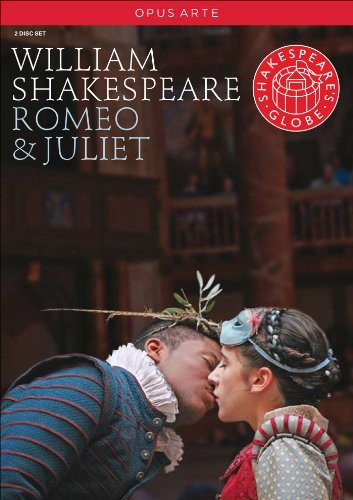
Romeo And Juliet / Edun, Kendrick
ROMEO AND JULIET
(Standard DVD in NTSC Version)
Prince Escalus – Andrew Vincent
Mercutio – Philip Cumbus
Paris – Tom Stuart
Montague – Michael O'Hagan
Lady Montague – Holly Atkins
Romeo – Adetomiwa Edun
Benvolio – Jack Farthing
Abraham / Apothecary – Graham Vick
Balthazar / Peter / Gregory – Fergal McElherron
Capulet – Ian Redford
Lady Capulet – Miranda Foster
Juliet – Ellie Kendrick
Tybalt – Ukweli Roach
Nurse – Penny Layden
Friar John / Sampson – James Lailey
Friar Lawrence – Rawiri Paratene
Dominic Dromgoole, director
Simon Daw, design
Sian Williams, choreographer
Music composed by Nigel Hess
Recorded live at Shakespeare's Globe Theatre, London, August 2009.
Bonus:
- Cast gallery
- Famous speeches
Picture format: Widescreen, NTSC
Aspect Ratio: 1.78:1
Region code: 0 (worldwide)
Menu language: English
Subtitles: English
Running time: 171 mins
No. of Discs: 1 (BD 50)
Dominic Dromgoole’s production brings refreshing clarity to one of Shakespeare’s most famous and best-loved tragedies, drawing out the contemporary relevance of this passionate teenage love story. Ellie Kendrick, a truly youthful Juliet, and Adetomiwa Edun, a boyish Romeo, head an excellent cast whose period costumes point to the timelessness of parental disapproval, adolescent temperament, rivalry and violence. Filmed before a live audience at Shakespeare’s Globe in the heart of London, its intimate and atmospheric setting adds immediacy and vitality to the humour and passion of Shakespeare’s verse. Filmed in High Definition and true surround sound.
R E V I E W:
Romeo and Juliet is possibly Shakespeare’s most famous play, particularly outside Britain. Ask most people to name a play by William Shakespeare and the vast majority will say Romeo and Juliet. The play’s enduring appeal is such that every year in Verona hundreds of thousands of tourists flock to a little house in the city, which is said to have been Juliet’s home. Incredibly, it is one of the most visited sites in Verona! The house features the famous balcony; there’s a small courtyard with a bronze statue of the heroine, whose metallic chest is worn out due to a belief that if one strokes the breast of the statue, one will have good luck for the rest of one’s life! This is only one aspect! Another is that many people write their names and the names of the ones whom they love on the walls of the entrance because they believe that if they write on that particular place, their love will last forever! But to me, the craziest thing of all is that since the 1930s, letters addressed to Juliet keep arriving in Verona! Apparently, more than five thousand letters are received annually. The letters are read and replied to by local volunteers, organised since the 1980s in the Club di Giulietta (Juliet’s Club), which is financed by the City of Verona. Strangely enough, as Romeo and Juliet are fictitious characters even though historically there are records that the families (both the Capulets and the Montagues) did actually exist; however, only the Montagues (Romeo’s family) are said to have lived in Verona; the Capulets were probably from Cremona.
So, why do people adore Romeo and Juliet so much? It is one of Shakespeare’s earlier plays - probably written between 1591 and 1595 - but definitely not one of his best or with the most intriguing plot! After all, the end with the two lovers committing suicide is a result of a series of implausible circumstances and the manner, in which they fall in love so hopelessly after having looked at each other in a ball, is not exactly believable! To my mind, the probable reason for the play’s appeal lies in the idea of youthful, pure love and the concept of fate - no matter what the two lovers do, they are doomed to die. Generally people like the idea that their lives have been “written” somewhere and they have no control over them hence such popular expressions as “it wasn’t meant to be”! Then, there is the tragic element: it is only when confronted with the deaths of Romeo and Juliet that the two feuding families find reconciliation. Whatever the reason, the truth is that Romeo and Juliet remains one of Shakespeare’s most performed plays and one that has been adapted countless times into other art forms: there are various operas, tone poems and ballets, films, television adaptations, paintings and many more!
The current offer on DVD, from the Opus Arte label, was filmed live at the Shakespeare’s Globe in the summer of 2009. It was a production that drew an array of opposite reviews, ranging from the ecstatic to the banal and mediocre. It is a production that rests on the shoulders of youth, as the two leads are both extremely young, which is to my mind absolutely right. After all, this is how they are described in the play. Romeo is here portrayed by the pleasantly athletic and extremely handsome Adetomiwa Edun, making it plainly obvious why Juliet falls for Romeo, the moment she first lays eyes on him. Edun’s acting though is a bit of a mix! He is at times outstanding, particularly in the scenes with his mates, then during the ball at the Capulets and in the conversations with Friar Lawrence where I found him quite moving. However, he is not passionate enough in the scenes with Juliet, particularly in the end when he believes her dead and takes his own life. It is a very poignant, touching moment if the actor is capable of conveying all the love, passion and larger-than-life emotions tearing his heart apart at that moment in time; unfortunately, Edun does not quite achieve that, although he is more convincing during the ball and the famous balcony scene. At times, I also had the impression that he struggled with Shakespeare’s verse; he looks strained, perspiring profusely in a couple of scenes and occasionally, the text comes out a little muddled. In spite of these slightly less positive aspects, Edun makes a plausible and very attractive Romeo.
As for Ellie Kendrick as Juliet, I had difficulty believing that such a Romeo, as portrayed by Edun, would have fallen for this particular Juliet! Kendrick, like Edun, is a very young actress - she was only eighteen when she played the part and actually appears younger - and although she is pretty enough, she looks too pale and her stage presence is quite subdued, at times a little dull. She was very effective as Anne Frank in the 2009 BBC mini-series The Diary of Anne Frank but, as Juliet, she fails to convince. Although she speaks the verse intelligently, generally more clearly than Edun, and is rather good in the scenes when she defies her parents, I could not for one moment believe that there was a passionate woman's heart pulsating inside this teenage girl’s body.
The performances that I most enjoyed were actually not from the two leading characters. New Zealand-Maori actor, Rawiri Paratene is simply excellent as a strong-minded, kind and robust Friar Lawrence instead of the over-pious priest, as he is often portrayed. His diction is very clear too and he projects his voice extremely well, making Shakespeare’s verse positively glow. Ian Redford as the patriarch of the Capulet house is convincing and particularly Miranda Foster, as Lady Capulet is very believable and moving. One of the best performances on the DVD is actually from Penny Layden as Juliet’s nurse. Unlike many productions where she is more of a caricature than a real person, here she is a truly moving and dignified middle-aged woman, totally believable as the nurse who cares deeply for her charge, the young Juliet. Philip Cumbus makes a convincing melancholic Mercutio; Jack Farthing, as Benvolio, and Ukweli Roach, as the angry Tybalt, give exceptionally fine performances and deliver their lines very effectively.
This production of Romeo and Juliet by director Dominic Dromgoole is an excellent effort even though I thought that Juliet was miscast. Dromgoole is very successful with the street scenes, as the fights, choreographed by Malcolm Ranson, have great intensity and a plausible brawling aspect to them. The music by Nigel Hess is used very effectively, often sustaining the action and carrying it over. The ball scene is possibly one of the most attractive I have seen both in musical terms and in the graceful choreography by Siân Williams. The costumes are Elizabethan and the settings are minimal, as was the case in Shakespeare’s time.
The production was specifically created for the Shakespeare’s Globe, in London, which is a replica of the real one, where many of his plays were brought to life. This fact enhances the beauty of the verse and makes modern audiences understand why the language needed to be often elaborate and why many features were described by words whilst today, we would probably have a lot of special effects. In Shakespeare’s day, the special effects were the words: the passing of time was given through the text, the difference between night and day would have been expressed through speech, and the actions, emotions and behaviour were carried through the sheer beauty and expression of the verse. Let us not forget that, in Shakespeare’s time, the plays would have been performed in broad daylight and the theatre did not have a roof; neither does the present replica of the Globe. The audience stood very close to the action and to the actors, on stage, and these often addressed the public directly by making comments about the action or asking rhetorical questions, which were designed to help audiences the better to understand the plot and the message.
I found this filmed version of the live Globe production very enjoyable although it may be a good idea to watch one or two acts at a time rather than all five in one go, as it can otherwise prove a little overwhelming. However, it is worth sticking with it until the end. It is probably the closest you will ever get to experiencing a “real” performance, as it would have been when Shakespeare was alive; except if you travel to the new Globe Theatre and watch it there live on stage!
-- Margarida Mota-Bull, MusicWeb International
Dvorak's Prophecy - Film 6 - Lou Harrison & Cultural Fusion [DVD]
“Lou Harrison and Cultural Fusion”
A PostClassical Ensemble “More than Music” film
Written and produced by Joseph Horowitz
Visual presentation by Peter Bogdanoff
Film six in the six-film Naxos series:
“Dvorak’s Prophecy: A New Narrative for American Classical Music”
Joe Horowitz writes of this film: "No non-Western musical idiom has so impacted on the Western concert tradition as Indonesian gamelan, beginning with the Javanese Pavilion at the 1889 Paris Exposition: an epiphany. Sampling gamelan-inspired works by Debussy, Poulenc, Messiaen, and McPhee, we arrive at a paragon exemplar of cultural fusion – Lou Harrison – and a pair of concertos, for violin and piano, unsurpassed by those of any other American. The composer/scholar Bill Alves demonstrates the layered complexity of Javanese gamelan, and how it translates into keyboard textures composed by Harrison for Keith Jarrett. For Harrison’s Concerto for Violin and Percussion, we tour the “junk percussion” – including flowerpots and washtubs – that Harrison made sing and dance."
He goes on to write "We now inhabit a “postclassical” musical aesthetic that, rather than piling on modernist complexity, draws inspiration from a variety of sources, Eastern and Western, “high” and popular. The prophetic figure, it seems to me is Lou Harrison, who practiced world music before there was a name for it. Harrison was certainly a composer who discovered a usable past – including music from Indonesia, China, and Japan. In the New World, a usable starting point was and remains the sorrow songs of African Americans, so eloquently celebrated around the turn of the twentieth century by W. E. B. Du Bois and Antonin Dvořák. Dvořák’s 1893 prophecy that “negro melodies” would foster a “great and noble” school of American music has never seemed more pertinent.”
"These six beautiful films reveal a compelling, inclusive musical tradition, deeply interwoven with American culture." – J. Peter Burkholder, author of 'A History of Western Music' and 'Listening to Charles Ives'.
Wagner: Der Ring des Nibelungen / Stemme, Hilley, Runnicles, Deutsche Oper Berlin
The tetralogy of four operas that form Der Ring des Nibelungen (‘The Ring of the Nibelung’) explores the conjunction of love and power in a mythic landscape in which true power resides in possession of the ring. Composed over more than a quarter of a century, monumental in scale, and structured after the precedent of Greek drama, the cycle was first performed in 1876. Staged by the award-winning director Stefan Herheim, this innovative new production from Deutsche Oper Berlin features a leading international cast conducted by Sir Donald Runnicles.
REVIEW:
The Deutsche Oper Berlin is an important Wagner house, once dubbed “the winter Bayreuth”. This Ring, directed by the Norwegian Stefan Herheim, had a very long-serving predecessor in Götz Friedrich’s much-admired cycle that ran for 33 years (1984–2017).
Das Rheingold introduces several of the design tropes that unite the cycle visually and dramaturgically. Herheim is aware that this is in Berlin, and there are some World War Two and Wehrmacht references, about which he is quite unapologetic, speaking in the Rheingold booklet of “a chapter in German history which…systematized the extinction of entire people groups”. Those suitcases symbolize more than voluntary migration.
Derek Welton and Annika Schlicht have impressive voices well suited to their roles, although Fricka’s affectedly silly acting manner sometimes takes playfulness a bit far. Equally well sung are the Loge of Thomas Blondelle, the Freia of Flurina Stucki, and the Erda of Judit Kutasi, but then, this whole cycle deploys a seasoned Wagner cast, with few weak links.
The final scene leads us to Die Walküre, for which we need major new characters to be born, namely Brünnhilde, Siegmund, and Sieglinde. That means Wotan has some procreative work to do, so he does not enter Valhalla, but goes down through the prompt box whence Erda arose, there to sire with her the warrior maiden who is the Valkyrie of the title.
Die Walküre brings a change of Wotan, and another experienced Wagnerian, Iain Paterson, gives a sympathetic, authoritative, and well-sung account of his immensely demanding role. His huge Act 2 monologue – sometimes cited as one of longueurs of the Ring – is compelling. Hunding’s rather one-dimensional role is always watchable in Tobias Kehrer’s strongly played interpretation. Brandon Jovanovich’s Siegmund has pathos and when needed, vocal power, but Elisabeth Teige’s Sieglinde takes the vocal honors for a beautiful and touching portrayal. Nina Stemme is now a veteran Brünnhilde, having sung that and other Wagner leading roles all over the world, and she is probably still heading the list for casting directors of major opera houses; certainly she is on ringing form.
Herheim brings a surprise addition to the cast of Die Walküre in inventing the role of Hundingling, a young, soft-toy cuddling offspring of Hunding and Sieglinde. He is not mere decoration but plays a real role in Act 1, interacting with his bullying father and occasionally irritable mother, and often being comforted by the newly arrived stranger who seems to resemble his mother. Herheim explains in the booklet that this child is the embodiment of the shame Sieglinde feels about her enforced marriage. As Siegmund pulls the sword from the tree (or piano keyboard), Sieglinde slits the throat of Hundingling, who falls dead. Herheim references Medea, and says Sieglinde makes the tragic mistake of thinking the sacrifice of Hundingling is necessary for her to extricate herself.
In the third act, the opening “Ride of the Valkyries” begins with the Valkyries appearing out of the migrant crowd and donning proper Valkyrie kit – well, helmets and spears. The playing of the “Ride” itself has the usual wrong accenting, but most conductors ignore Wagner’s specific instruction that the main stress is always on the first beat (“I’m sick on a see saw”, not “I’m sick on a see saw”). Maybe the singers, as they perused the score on stage, and who do occasionally ‘conduct’ one another, could have given the correct beat! The fallen heroes arise from under their winding sheets and act as sex pests to the Valkyries, with Wotan’s seeming approval, a sign maybe of how he sees love. The end of Act 3 is strong as ever, tenderly affecting as Wotan bids farewell to his favourite daughter, and banishes Brünnhilde to her rock (or piano) against a curtain of flames, as the migrants look on in concern.
Talking points in Siegfried begin with Mime’s costume. He has the whiskers and hat of the mature Wagner, and the striped jacket of a concentration camp prisoner – so both notorious antisemite and a victim of that racist prejudice. Siegfried’s bear is none other than Alberich, who wonders into other scenes where the text does not place him. Siegfried is garbed traditionally, for some costumes reference the design history of the Ring. He also forges Nothung convincingly enough, hammer taps and all, and when it’s done, a map of the world briefly covers the stage, suggesting he could now conquer it all. The Woodbird is a boy soprano, as the composer initially intended. He does not sing his music very convincingly alas, and for some reason later adopts Alberich’s clown make-up. The dragon is a pair of enormous glowing eyes, and a mouth full of sharp teeth, and extras wielding the giant bells of brass instruments (the fight is a noisily brassy piece, and the weakest music in the Ring). We have a new singer for Alberich, Jordan Shanahan, who is as effective as his predecessor.
In Götterdämmerung the now familiar features of this production are used and varied, adding aspects of the opera house itself including its audience. Thus the sculptural metal feature of interlinked discs from the foyer is now an onstage backdrop to the opening scene, where Hagen, in modern dress, sips his interval drink at a table. He fetches Waltraute from the front row of the stalls, where he dozes through his nocturnal colloquy with Alberich. As before characters operate some of the time, e.g. for the blood brotherhood oath, in their underwear. There are some details of which the meaning is elusive, such as the burning man crossing the stage in Act 2, just as Hagen begins to summon the Gibichungs. Others, such as Gunther joining Siegfried in visiting Brünnhilde in the final scene of Act One and sharing his lines, instantly make some dramatic sense. As befits this mighty closing work of the tetralogy, there is plenty of spectacle to bring the cycle to a blazing conclusion.
The new singers are uniformly very good. Hagen is the vocally and physically imposing Albert Pesendorfer, wonderfully baleful in his night watch. His half-brother Gunther is also well sung and acted by Thomas Lehman. His sister Gutrune is the assured Aile Asszonyi, and Okka von der Damerau sings Waltraute with touching beauty; her scene with Brünnhilde is a strong one.
The Brünnhilde of Nina Stemme and Siegfried of Clay Hilley bring the same qualities heard in Siegfried. The American Heldentenor was a sensation as a last-minute replacement at Bayreuth’s 2022 Götterdämmerung, and should be heard by anyone who fears that no-one can truly sing the role these days. He has the range, the shining sound, the musicality and stamina required. Nina Stemme also has those qualities, but is about twenty years Hilley’s senior. All those performances of the repertoire’s most demanding roles begin to take a toll, of course, and she perhaps tires as this performance progresses, with one or two top notes ‘spreading’ – but really it matters little, for she triumphs over the difficulties and remains the consummate performer of this role.
Runnicles and the Orchestra of the Deutsche Oper Berlin are superb throughout, as is the chorus (in Götterdämmerung Act 2). Their familiarity with this work shows in the confidence of the playing, and the orchestral set pieces such as Siegfried’s Funeral Music are tremendous. If you want to hear incandescent playing in Wagner, try the Prelude to Act 3 of Siegfried, but the many subtle moments (always listen for the bass clarinet in Wagner) are deftly touched in, too. You will realise that Nietzsche, in calling Wagner a supreme miniaturist, was not just indulging his fondness for paradox.
The filming and surround sound are excellent. The filmed interview and Herheim’s contribution to the booklets are very useful addition in explaining his concept. Perhaps it will be worth consulting both ahead of viewing each opera, but there is also merit in viewing these works as if it is opening night in the Deutsche Oper, and you don’t know what you will see until the curtain rises. Then, to quote T.S. Eliot’s The Waste Land, you can “get the beauty of it hot”. If that beauty is mainly in the highly eloquent singing and playing, you will find much to impress, question, debate and decode in the innovative production.
-- MusicWeb International
Messiaen: Catalogue d'Oiseaux / Pierre-Laurent Aimard
Renowned French pianist Pierre-Laurent Aimard kicks off his exclusive engagement to PENTATONE with a recording of Olivier Messiaen’s Catalogue d’Oiseaux (1956-1958). The pianist had intimate ties to the composer himself and his wife, Yvonne Loriod, for whom Messiaen wrote the Catalogue.
Praised by The Guardian as “one of the best Messiaen interpreters around,“ this is Aimard’s first recording of Messiaen’s most extensive, demanding and colorful piano composition. The luxurious release set contains an accompanying bonus film, on which Aimard shares his vast knowledge of and love for Messiaen’s work from behind the piano.
Due to its radical naturalism, the Catalogue d’Oiseaux is exceptional within the repertoire for solo piano. It is the grand hymn to nature from a man who never ceased to marvel at the stupefying beauty of landscapes or the magic of bird song. With his Catalogue, Messiaen tried – in his own words – “to render exactly the typical birdsong of a region, surrounded by its neighbors from the same habitat, as well as the form of song at different hours of the day and night,” suggesting an almost scientific approach to his subjects. The idea of ‘reproduction’ may have been central to Messiaen’s conception of the Catalogue d’Oiseaux, but in the finished work we hear a great composer at work, a master of innovative structures who finds an astonishing range of piano sonorities. In a world that is increasingly being destructed by man, Aimard views this cycle as “a musical refuge that resonates with an audience ever more concerned, expanded and affected.”
REVIEWS:
Unsurprisingly, Pierre-Laurent Aimard’s interpretations are anything but tame. His dynamic range is formidable, his voicing of chords scrupulously faithful, his clarity unimpeachable. It’s hard to imagine the textures having greater impact or precision, or the continuity and discontinuity being projected with greater concentration. Nigel Simeone’s essay for Pentatone is exceptionally informative on factual background. One can only salute this outstanding achievement.
– Gramophone (Editor's Choice, April 2018)
Pierre-Laurent Aimard’s long association with Olivier Messiaen’s music dates back to the early 1970s, when the teenaged pianist was a protégée of both the composer and his wife Yvonne Loriod. His 2000 recording of Vingt regards sur l’enfant Jésus has long held sway as a version of reference. In August 2017 Aimard set down the complete Catalogue d’Oiseaux, now released by Pentatone on three SACDS, accompanied by informative booklet notes by Nigel Simone and a valuable DVD where Aimard presents succinct overviews of each piece from the piano and offers interesting insights into Messiaen’s methodology and personality.
As the set reveals time and again, Aimard has long digested and internalized Messiaen’s colorful keyboard syntax. The pianist voices and balances extended sequences of chords with the utmost clarity and specificity. Minute variations in rhythmic asymmetry are scrupulously articulated, while Aimard never shortchanges the music’s frequent moments of silence. He also brings impressive timbral and characterful variety to low-register passagework that can sound muddy or indistinct in the wrong hands. Cases in point include Messiaen’s playful evocation of mating mallards in Le Merle de roche’s opening pages, and Le Loriot’s slow-motion chords that contrast with lively high-register dialogues depicting Garden Warblers.
Le Rousserolle Effarvatte, the cycle’s epicenter and longest movement, emerges as a dramatic and virtuoso tour-de-force, showcasing Aimard’s remarkable concentration throughout sustained contemplative passages, along with his sophisticated gradations in dynamics and touch that seemingly project the gnarly, tumultuous sequences in three-dimensional perspective. To be sure, the pianist’s fortissimos convey an edgy, even metallic patina (so do Yvonne Loriod’s, in fairness), and his occasional vocal grimaces distract. Moreover, there sometimes is more humor to the music than Aimard is willing to concede.
Aimard’s technical, stylistic, and musical authority build upon Loriod’s interpretive legacy, and set modern-day standards that will both inspire and intimidate future generations of Messiaen pianists.
– ClassicsToday (Jed Distler)
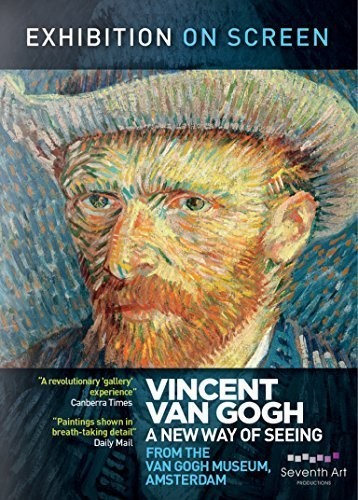
EXHIBITION ON SCREEN: VAN GOG
Shakespeare: The Winter's Tale
On this new release from the Royal Shakespeare Company, Shakespeare’s classic tale is reimagined especially for the screen. King Leontes rips his family apart but grief opens his heart. Will he find the child he abandoned before it is too late? This production of Shakespeare’s play is staged for the screen by the RSC. Directed by Erica Whyman, the play is set across a 16-year span, from the coronation of Queen Elizabeth II to the moon landings. “The first ever televised Royal Shakespeare Company world premiere is solid.” (The Independent) “Autolycus can be a touchstone for personal taste and Anne Odeke was delicious here across the whole gamut, from singing voice through to cream-cake comedy.” (The Arts Desk)
Reviews
“Enchanting” – The Times ★★★★
“Engaging and high-spirited” – The Stage ★★★★
Beethoven, Berg, Bartók: Violin Concertos / Zimmermann, Berlin Philharmonic
Adams: Become Ocean / Morlot, Seattle Symphony
Includes 1 CD & 1 DVD
Awarded the 2014 Pulitzer Prize for Music, John Luther Adams’ Become Ocean was commissioned and premiered by the Seattle Symphony Orchestra and Ludovic Morlot in June 2013. In May 2014 the orchestra and Morlot took Become Ocean to Carnegie Hall for the annual Spring for Music festival.
Become Ocean is a 45-minute-long work for full orchestra. Adams borrowed the title from a verse by composer John Cage, written in honor of fellow composer Lou Harrison’s birthday. Describing Harrison’s music, Cage wrote, “Listening to it / we become / ocean.” A visionary whose life and work are deeply rooted in the natural world, Adams inscribed the following statement on the score of Become Ocean, “Life on this earth first emerged from the sea. As the polar ice melts and sea level rises, we humans find ourselves facing the prospect that once again we may quite literally become ocean.”
R E V I E W:
With their first collaboration, Ludovic Morlot, the Seattle Symphony Orchestra and composer John Luther Adams have struck gold. Become Ocean, Morlot's first large-scale commission as music director of the SSO, is a symphonic work that feels even vaster than its forty-two-minute span. By dividing the large ensemble into three interlocking orchestras, Adams created a score that works on multiple levels: it's an abstract sonic experience at one extreme and, at the other, an evocation of nature and its irresistible force.
-- Thomas May, Listen Magazine


 {# optional: put hover video/second image here positioned absolute; inset:0 #}
{# optional: put hover video/second image here positioned absolute; inset:0 #}


 {# optional: put hover video/second image here positioned absolute; inset:0 #}
{# optional: put hover video/second image here positioned absolute; inset:0 #}


 {# optional: put hover video/second image here positioned absolute; inset:0 #}
{# optional: put hover video/second image here positioned absolute; inset:0 #}
 {# optional: put hover video/second image here positioned absolute; inset:0 #}
{# optional: put hover video/second image here positioned absolute; inset:0 #}


 {# optional: put hover video/second image here positioned absolute; inset:0 #}
{# optional: put hover video/second image here positioned absolute; inset:0 #}


![Mozart: Die Zauberflöte / Davis, Keenlyside, Damrau [Blu-ray]](http://arkivmusic.com/cdn/shop/files/1334200.jpg?v=1749392519&width=800) {# optional: put hover video/second image here positioned absolute; inset:0 #}
{# optional: put hover video/second image here positioned absolute; inset:0 #}


 {# optional: put hover video/second image here positioned absolute; inset:0 #}
{# optional: put hover video/second image here positioned absolute; inset:0 #}
 {# optional: put hover video/second image here positioned absolute; inset:0 #}
{# optional: put hover video/second image here positioned absolute; inset:0 #}


![Dvorak's Prophecy - Film 6 - Lou Harrison & Cultural Fusion [DVD]](http://arkivmusic.com/cdn/shop/files/4009930-2753040.jpg?v=1749278802&width=800) {# optional: put hover video/second image here positioned absolute; inset:0 #}
{# optional: put hover video/second image here positioned absolute; inset:0 #}




 {# optional: put hover video/second image here positioned absolute; inset:0 #}
{# optional: put hover video/second image here positioned absolute; inset:0 #}


 {# optional: put hover video/second image here positioned absolute; inset:0 #}
{# optional: put hover video/second image here positioned absolute; inset:0 #}
 {# optional: put hover video/second image here positioned absolute; inset:0 #}
{# optional: put hover video/second image here positioned absolute; inset:0 #}


 {# optional: put hover video/second image here positioned absolute; inset:0 #}
{# optional: put hover video/second image here positioned absolute; inset:0 #}


 {# optional: put hover video/second image here positioned absolute; inset:0 #}
{# optional: put hover video/second image here positioned absolute; inset:0 #}


 {# optional: put hover video/second image here positioned absolute; inset:0 #}
{# optional: put hover video/second image here positioned absolute; inset:0 #}